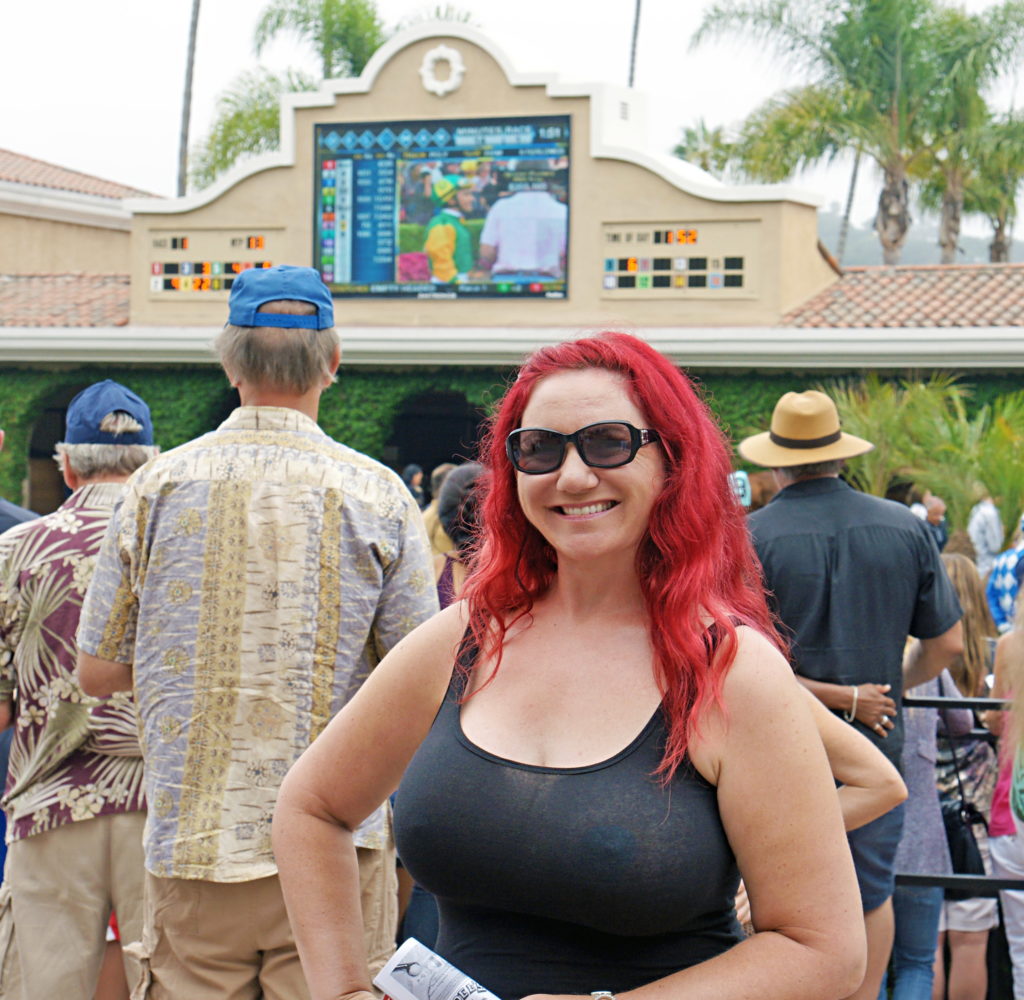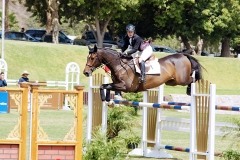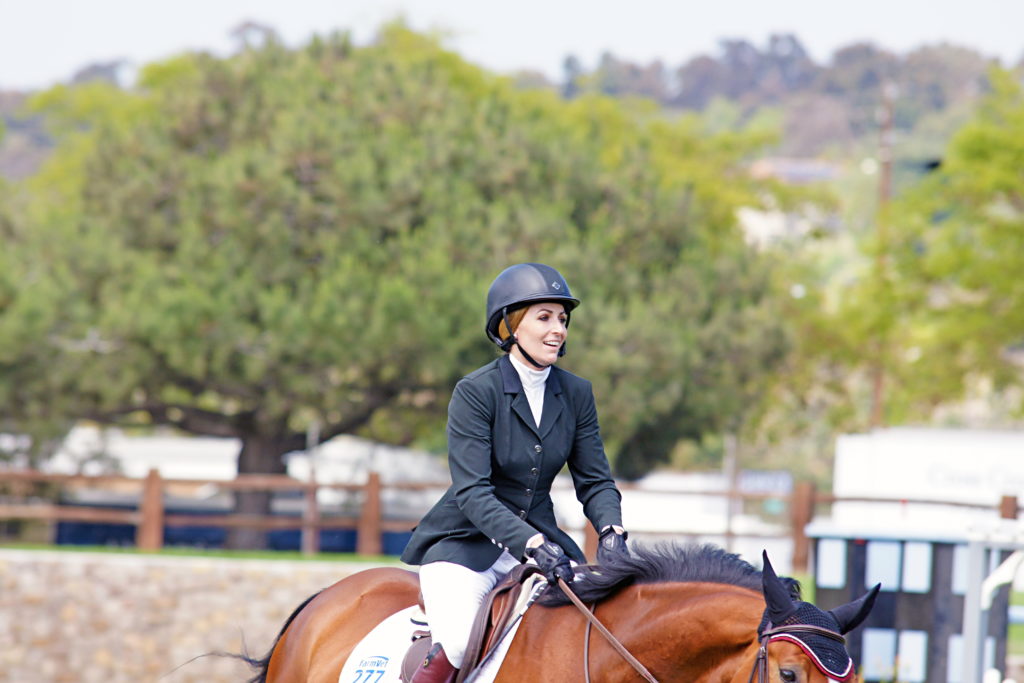Del Mar, California is a beach city in San Diego county and home to the Del Mar Fairgrounds, which in turn is home to the Del Mar Thoroughbred Club racetrack. It was built in 1936 by a partnership including Bing Crosby, actors Pat O’Brien, Gary Cooper, Joe E. Brown, Charles S. Howard and Oliver Hardy. You can listen to a song about it here: Where the Turf Meets the Surf 😀
You can reach the racetrack by taking California Interstate Highway 5 (known in California as “The 5”), exiting on Via de la Valle, and heading west towards the Pacific Ocean. Hard to miss, really.
However, if instead you head east away towards the Atlantic Ocean (about 2,000 miles away-but we’re not going that far), you’ll quickly arrive at the Del Mar Horse Park (only one mile away) which hosts many events free to the public, including show jumping. Since we live near Del Mar, we are attending just such an event.
As a background, show jumping is a relatively new equestrian sport. Until the Inclosure Acts, which came into force in England in the 18th century, there had been little need for horses to jump fences routinely, but with this act of Parliament came new challenges for those who followed fox hounds. The Inclosure Acts brought fencing and boundaries to many parts of the country as common ground was dispersed amongst separate owners. This meant that those wishing to pursue their sport now needed horses that were capable of jumping these obstacles.
According to the United States Equestrian Federation, “Spectator friendly and easy to understand, the object for the Jumper is to negotiate a series of obstacles, where emphasis is placed on height and width, and to do so without lowering the height or refusing to jump any of the obstacles. The time taken to complete the course is also a factor. The Jumping course tests a horse’s athleticism, agility and tractability while simultaneously testing a rider’s precision, accuracy and responsiveness. Perhaps most importantly, Jumping tests the partnership between horse and rider.”
There are many officials present, making announcement and keeping scores, but enough of that. We are here just to watch the beauty of it. 🙂
The Approach
Riders spend years working with their horses, and communicate less with the reins and more with their own body. A rider always looks in the intended direction; never down, up, sideways, or otherwise. The horse is able to feel that intention and respond to it.
This rider is looking towards the next jump, which the horse responds to.
The jump is decorated with plastic flowers; the horse is schooled to ignore all such distractions.
The second jump is called an oxer, which makes the jump a bit wider for the horse.
no images were found
You can see in this short gallery a collection of other riders and their mounts approaching jumps.
Starting the Jump
To me, the most exciting time is when the horse commits to the jump, when muscles tense, when the rider prepares, and all systems are Go.
The rider must position herself correctly, as even dropping her head will affect the horse’s balance.
Notice that this rider has a crop. Riders never use a crop to strike a horse, as shown in movies. Horses have very sensitive skin — they can feel a fly land on their skin; rather, a crop is used as an additional communication tool, lightly tapping the animal to draw its attention.
The rider releases the reins to allow the horse to extend its head. By doing this, the rider does not bump the horse’s mouth or inadvertently use the reins to balance herself.
no images were found
Refusal
Not all approaches result in a jump.
no images were found
There are many reasons why a horse might refuse a jump. It is very important for the rider to be correctly seated in order to recover.
In the Air
When all goes well, there comes that magical moment when the 2,000 pound horse and rider seemingly float, when they glide over the jump as if it’s the most natural thing in the world.
If you look closely, you can see that the girth is slightly loose; a too-tight girth will prevent the horse from breathing well. A rider must use her own technique to stay balanced on the horse and not rely completely on the leather attachments.
This horse is wearing boots to protects its front legs from damage if it hits a cross bar.
Notice the position of the stirrups. The rider pushes down and out for best balance and to provide the most freedom to the horse.
I have included a collection of well-executed jumps for you to enjoy.
The expression on this rider’s face says it all.
Once Upon a Time…
The fact is, I am not a complete stranger to horses nor to jumping.
A long, long time ago, I lived in a small town in Texas called Leonard and owned a horse named Samantha. Very near Leonard is the thriving metropolis of Celeste, home to Cloudline Hounds, of which I was a member. The owner, Colonel Rex Denny (sadly, deceased), taught me riding and jumping in the fields of Texas, and gave me a live-long love and appreciation of our equine friends.

















